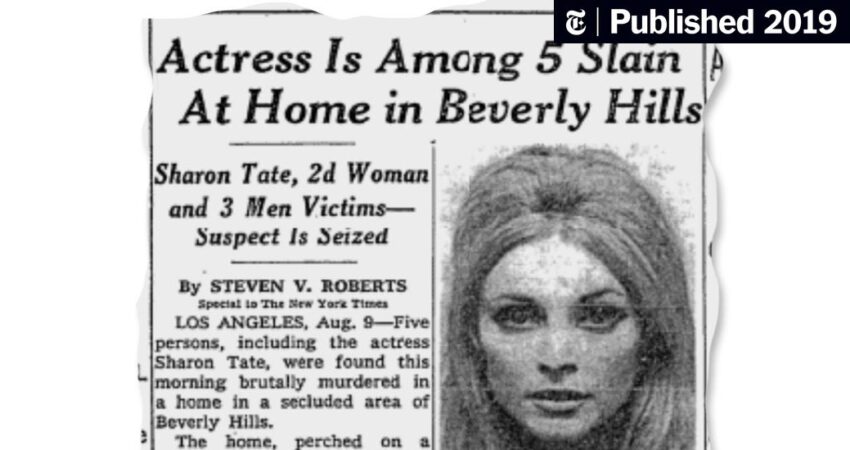In the year 1969, specifically on the fateful day of August 9th, actress Sharon Tate and four others met a tragic end in a residence situated in Benedict Canyon that belonged to Tate and her spouse, the renowned director Roman Polanski.
The distressing discovery was made by a maid who promptly alerted the authorities upon stumbling upon the lifeless bodies at 9 a.m. within a Beverly Hills abode.
The scene was haunting, with a blonde woman found on the living room floor, a rope encircling her neck, and stab wounds marking her swollen abdomen.
Disturbingly, a bloodied figure was found with a hood over their head, while another was discovered behind the steering wheel of a vehicle.
Two additional bodies were sprawled outside on the lawn, positioned approximately 50 feet apart, echoing the sound of gunshots that a neighbor claimed to have heard around midnight.
The chilling message “pig” was inscribed in blood on the front door, painting a gruesome picture of the heinous crime scene that unfolded.
The orchestrator of this brutal act was none other than Charles Manson, a former convict who had transitioned into a cult leader, instructing his devoted followers to infiltrate a rental property in Benedict Canyon occupied by the esteemed filmmaker Roman Polanski.
Under Manson’s sinister orders, they executed the pregnant wife of Polanski, Sharon Tate, along with four other individuals before the break of dawn.
The appalling nature of these killings resonated deeply with the public, particularly those in the entertainment industry, instilling fear and paranoia among Hollywood’s elite.
The sense of vulnerability was palpable, leading some celebrities to arm themselves with firearms for protection, while others resorted to heightened security measures such as installing surveillance cameras or seeking refuge at establishments like the Beverly Hills Hotel.
The tragic events not only exposed the dark underbelly of Los Angeles, replete with opportunistic individuals hovering on the fringes of celebrity culture, but also underscored the underlying tension between fame and the relentless pursuit that accompanies it.
In the aftermath of the murders, there emerged a heightened awareness of the intertwined narratives that permeate Hollywood, blending elements of allure and mystery that frequently inspire the scripts of



